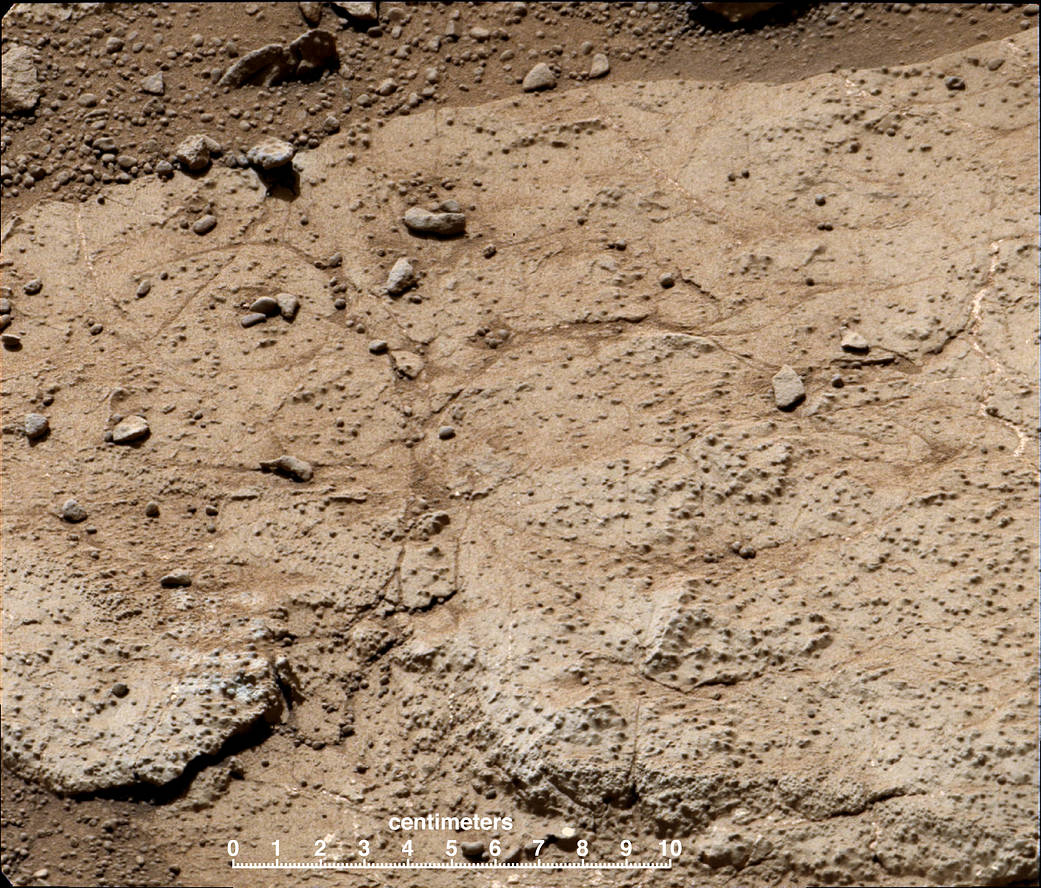This patch of bedrock, called “Cumberland,” has been selected as the second target for drilling by NASA’s Mars rover Curiosity. The rover has the capability to collect powdered material from inside the target rock and analyze that powder with laboratory instruments. The favored location for drilling into Cumberland is in the lower right portion of the image.
The rover’s first drilling target, “John Klein,” provided evidence for an ancient freshwater environment that had the basic elemental ingredients and an energy source favorable for microbial life. Like that first target, Cumberland is a patch of flat-lying rock with pale veins and nodules, on the floor of a shallow depression called “Yellowknife Bay.” The rover team plans to investigate Cumberland to check and confirm the results from John Klein.
This image was taken by the right (telephoto-lens) camera of the rover’s Mast Camera (Mastcam) instrument during the 192nd Martian day, or sol, of Curiosity’s work on Mars (Feb. 19, 2013). The scale bar is 10 centimeters (3.9 inches). The image has been white-balanced to show what the rock material would look like if it were on Earth. Two unannotated versions, white-balanced and raw color (showing what the rock material looks like on Mars to the camera) are available.› White-balanced version› Raw color version
Malin Space Science Systems, San Diego, developed, built and operates Mastcam. NASA’s Jet Propulsion Laboratory, Pasadena, Calif., manages the Mars Science Laboratory Project and the mission’s Curiosity rover for NASA’s Science Mission Directorate in Washington. The rover was designed and built at JPL, a division of the California Institute of Technology in Pasadena.
Credit: NASA/JPL-Caltech/MSSS
2 min read
























